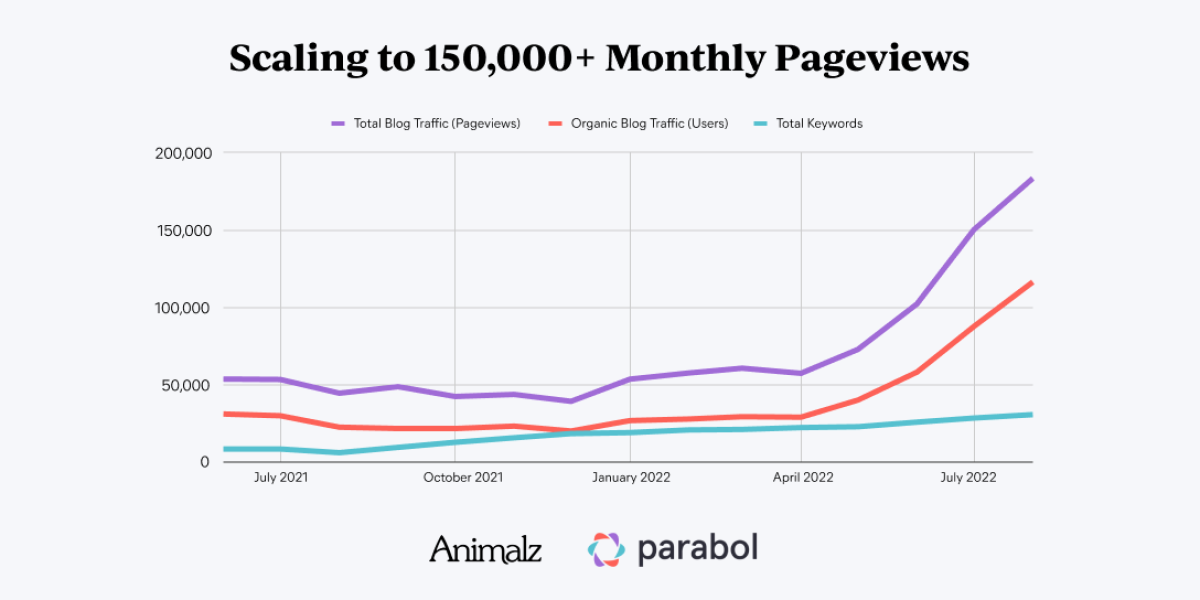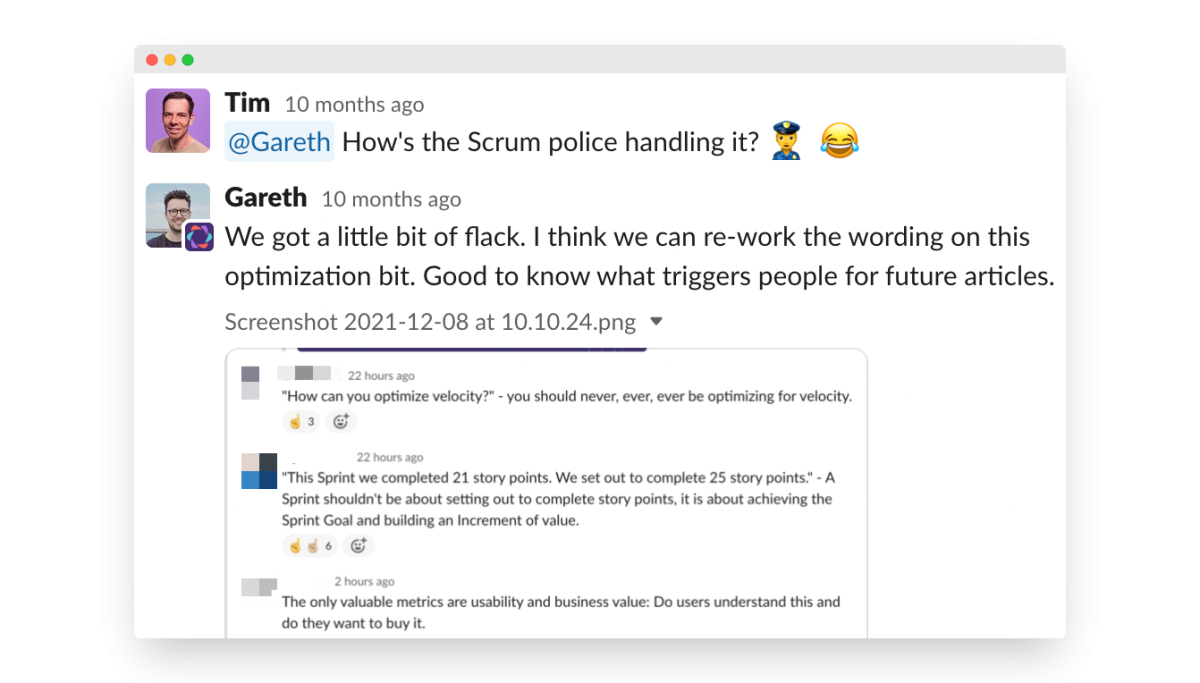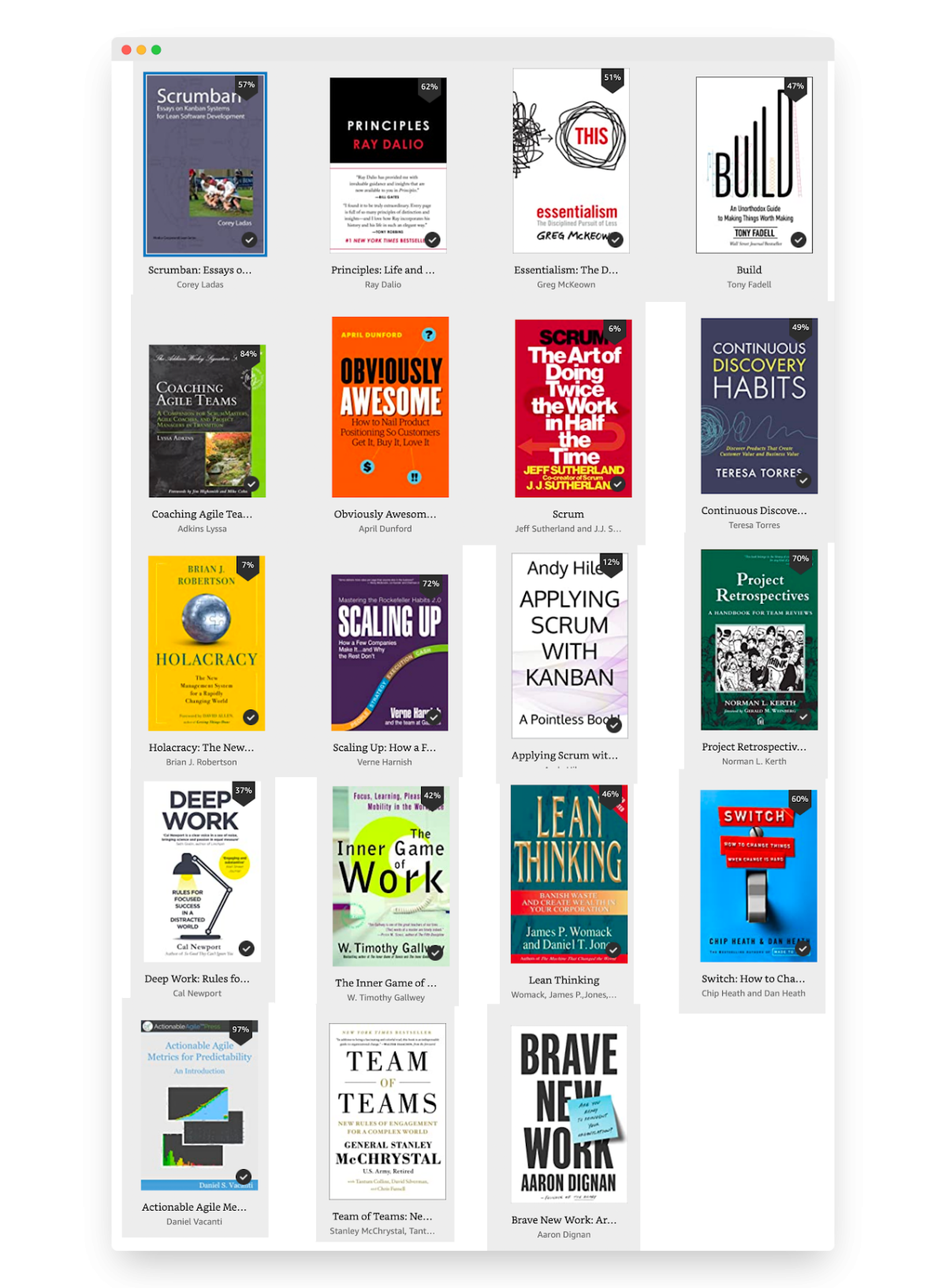How can you make content marketing work with a nitpicking audience, Goliath competitors, and a startup’s budget? It’s a challenge many small teams face. One of them, Parabol, an online meeting tool, turned to us to solve it.
We embraced Parabol’s culture of experimentation to discover an approach we call content journalism: a mix of content marketing and brand journalism that catapulted Parabol’s blog to more than 150k monthly visits.

Breaking Into a Busy Space on a Budget
Gareth Davies, Parabol’s content lead, never questioned the potential value of content marketing as an acquisition channel. Their ideal customer is tech-savvy, searches for solutions online, and can immediately jump from an article into a Parabol-facilitated meeting because the product is self-serve SaaS.
How to make content work was the big question:
The space is crowded and competitive. Parabol’s tool focuses on teams that apply agile practices and methodologies to manage their products and projects. Both small and large companies like Atlassian, Miro, and monday.com fight over keywords in that space.
The audience is meticulous and divided. “They’re very opinionated with a highly attuned bullshit detector,” says Gareth. Content that passes the initial BS test can still expect scripture-level scrutiny from several agile factions – of which at least one will take offense to something.
The budget is lean and limited. Bringing Animalz on board allowed Parabol to strengthen its content team of one – Gareth – with a content marketer (me), an editor, and a copy editor. Yet that’s still a lean operation compared to competitors with at least half a dozen people working on content.
All these challenges are formidable, but number two especially so. How can you write for an audience averse to anything reeking of marketing, particularly when you’re new to the subject matter and community? Gareth: “You can’t sound exactly the same as everyone else and write these 20 articles that your competitors also wrote to show up on the search engine results page.”

Content Journalism: Capture Organic Traffic and Community Acceptance
We noticed a pattern when Gareth, our strategist Kayleigh Taylor, and I immersed ourselves into the agile community and Google keyword rankings. Eighty percent of relevant content was created by either:
Lazy content marketers producing copy-cat content that’s often SEO-optimized, rarely accurate, and always incapable of passing the audience’s bullshit detector.
Agile authorities turning their hard-earned experiences into interesting musings, but often without content marketing or writing experience.

The result? Many useless content marketing pieces dominating the search results versus insightful but hard-to-find-and-even harder-to-read articles from experts.
We saw an opportunity to combine agile authenticity with Animalz’s high-quality content marketing practices. We call it content journalism.
Content journalism sits between traditional content marketing and brand journalism. A content journalist blends in-depth research, interviews, and storytelling with SEO optimization and well-defined marketing goals. This approach results in high-quality articles that are authoritative and deliver business results.
Discovering Content Journalism
The right approach for content journalism didn’t come to us overnight. We iterated our way to this strategy over many months, made possible by three factors:
Parabol’s culture. Parabol practices what it preaches by following the agile principle of continuous improvement. To learn and grow, it embraces experimentation, risk-taking, and failure. This mindset gave us the time and space to explore the opportunity we saw and refine our budding approach.
Parabol’s product. An essential feature of Parabol’s online meeting tool is running so-called retrospectives. In these meetings, you reflect on a previous work cycle to distill learnings that improve future ones. Gareth and I hold such meetings bimonthly, allowing us to run little experiments that constantly improve our approach and collaboration.
Personal passion. Despite our initial limited familiarity with agile, Gareth and I are both recovering managers turned content marketers. We’ve experienced dysfunctional traditional organizations and share a passion for studying productivity, management practices, and product development—all themes related to agile. This personal interest motivated us to read books, take courses, and connect with folks in the agile community.

How to Practice Content Journalism: 4 Tips
The Parabol blog has attracted more than 1.2 million pageviews since we first started experimenting with content journalism together. But you don’t have to work with an agency or be focused on agile to apply this approach. Here are four tips that can turn any content marketer into a content journalist.
1. Conduct Research Continuously
As a content journalist, you’re never off duty. Like a reporter, you’re always looking for interesting topics, people, and angles for future articles. You need to plunge yourself into the customer’s field for a long time to become authentic and, perhaps, one day, authoritative.
Content journalism isn’t for you if you prefer the narrow perspective of a well-planned content calendar. You’re constantly reading, taking notes, and talking to folks to learn and discover new story ideas way beyond the regular call of content marketing duty.

2. Use Interviews for Content and Marketing
Interviewing experts is a critical element of content journalism because interviews:
Act like training wheels. When you start with a new client and topic, you are hopefully slightly more versed in the subject than the average content marketer based on personal interest. Interviews help you develop subject matter expertise quickly and allow you to share expert knowledge with readers – despite your inexperience in the field.
Enable standout content. You’re usually up against lazy content marketers who rely on readily-available information for their articles. By interviewing experts, you uncover unique insights, tips, and anecdotes to create standout content.
Drive word-of-mouth traffic. Many experts have audiences of their own and talk to other authorities in their field. They will share your articles, introduce you to others, and appreciate your client’s brand when seeing your genuine interest in their subject matter.

3. Master SEO and Storytelling
Traditionally, journalists are good at telling stories, whereas content marketers excel at SEO-optimized how-to recipes. Content journalists can do both.
You should, of course, consider the current keyword rankings for a topic if your article’s goal is to rank high in the search results, like this Parabol article on Sprint Goals, a pure recipe. But keywords and search intent can also inform story ideas or the angle you should take for a piece of content.
On the flip side, a story might still be able to rank for a keyword, like this piece on agile implementations. It relies on and features many SME quotes but still ranks for the keyword “agile implementation.”
Content journalists have enough SEO and journalism chops to know when to focus on SEO, when on stories, and when to combine both.
4. Stand Out With Opinions, Standards, and Simplicity
Seven high-ranking articles saying something is true doesn’t make it so. And the agile community so hotly debates many concepts that their original meaning or intention gets lost amid the jargon.
“Tim did a really good job of cutting through the nonsense and the dogma and being like, let’s actually look at what this thing really is and explain it in human terms versus lots of people claiming they know what it is and just copying each other.”—Gareth Davies, content lead at Parabol
Our content journalism approach allows us to create accessible, accurate, and educational articles about important agile topics. These pieces rank well and clarify subjects that confuse people. An example is Story Points: The Simple Explanation You’ve Been Looking For, which explains the controversial and often misunderstood concept of “story points.”

Content Journalism Delivers Results in the Long Run
Even if Parabol’s challenges – critical customers, competition, and cash constraints – don’t resonate with you, the results of content journalism probably do: half a million organic visitors in just 12 months, over a dozen articles in Google’s top three, and monthly blog visits passing the 150k mark.

But before concluding content journalism is the marketing miracle you’ve been looking for, remember that this approach only works in the long run and requires an extraordinary commitment from everyone:
As a content marketer, you must constantly evolve your skillset with practices and insights from SEO, marketing, and journalism.
You need to immerse yourself in the community and topic, going way beyond your “official” job scope.
The company cultures at the customer and agency should support experimentation and incremental learning. Prepare for a winding journey to success that includes failures.
With the right team and support from your leadership, content journalism can be a rewarding and enjoyable approach. As Gareth summed it up: “Animalz’s content journalism strategy has helped us do an incredible job of building our brand through our content and helping us win authority in a very competitive content space.”
